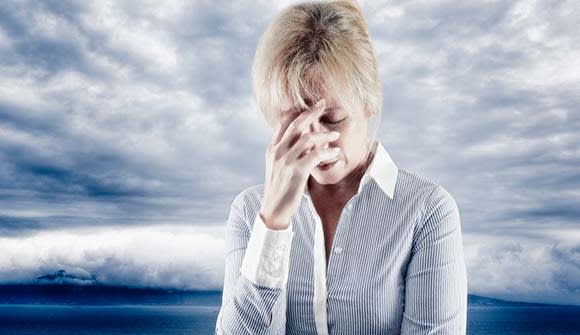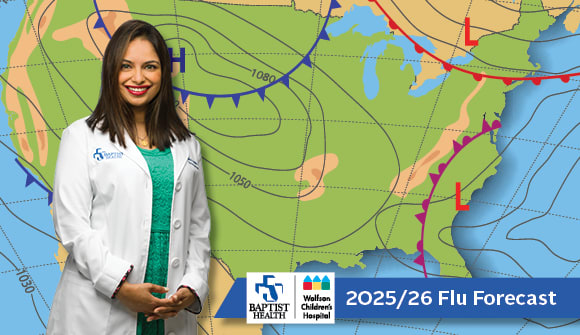Under pressure
When your pain is triggered by weather.
Article Date:

You’re not psychic, but you’ll bet a storm’s coming as the air thickens, humidity heightens, and your head throbs in pain. It may sound strange, but is there a link between weather and pain?
“Many people who suffer from physical pain such as headaches, migraines, or arthritis are especially sensitive to weather changes, and these changes can act as triggers for physical pain,” said Todd Leibowitz, DO, a family physician with Baptist Primary Care.
Other conditions that may provoke weather-responsive pain include fibromyalgia, prosthetic joints (i.e. knee or hip replacements), previous musculoskeletal injuries, menstrual pain, and scar tissue.
Weather triggers may also include:
- Bright sunlight
- High wind speed
- Temperature extremes
- Barometric pressure
- Atmospheric humidity
“As we approach cooler fall weather ahead, some patients may notice incidental improvement in their physical pain symptoms, including headaches, migraines, and arthritis,” Dr. Leibowitz said. (But there are also people whose joints painfully tighten in colder climates.)
“In some cases, migraines can be provoked by weather changes and certain environmental conditions often consistent with bad weather,” Dr. Leibowitz said. “We’re not sure why this happens, but theories range from weather-induced hormone imbalances in the brain to swelling that can make your nerves more sensitive.”
The arthritis connection
“Arthritis symptom severity can be significantly weather-dependent, but unfortunately, we are unsure why this occurs and if the key variable is specific weather conditions/changes,” Dr. Leibowitz said. “It could be that the limited joint cartilage in osteoarthritis patients exposes nerves so joints are more sensitive to barometric pressure changes. Low barometric pressure may also cause inflammation and increase pain. Yet another theory suggests that cold temperatures can thicken joint fluid, leading to increased joint stiffness.”
Keep a diary
If you want to learn more about how often you’re feeling symptoms, it’s a good idea to document your pain experiences to keep your healthcare provider in the loop.
“I recommend that patients keep a pain diary to trend frequency and identify patterns relevant to the circumstances,” Dr. Leibowitz said.
Useful information may include:
- When the pain occurred
- Pain intensity and duration
- Weather conditions in which pain occurred
- Dietary intake and amount of sleep
- Relation to menstrual cycle (if applicable).
“Sharing this information with your healthcare provider can aid in diagnosis, identification of triggers, and may help guide prevention and appropriate treatment,” Dr. Leibowitz explained.
Pain prevention
According to Dr. Leibowitz, other valuable prevention and management strategies include staying active with regular exercise, eating a balanced diet, taking medications and supplements as prescribed by your healthcare provider, and using over-the-counter remedies such as ice packs, heating pads, and massage.
If you’re experiencing acute or chronic pain, make an appointment with a Baptist Primary Care physician near you by calling 904.202.4YOU. Your primary care physician can help guide you through the next steps.



